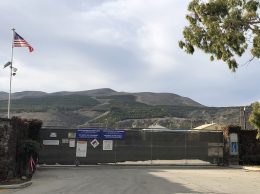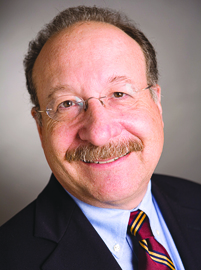Dubroff: Region’s road warriors weary of business in the slow lane
IN THIS ARTICLE
- Columns Topic
- Henry Dubroff Author
By Henry Dubroff Friday, November 6th, 2015
When mudslides shut Interstate Highway 5 through the Grapevine in mid-October, the effect on the Central Coast was immediate and severe.
Thousands of cars and trucks had little choice but to travel via Highway 101 and they clogged the route from Ventura to Santa Barbara — a trip that takes 30 minutes in light traffic became a half-day nightmare.
It’s not every day that a freak storm triggers 200,000 tons of debris to flow across the highway that runs through the Tejon Pass. But it is every day that Highway 101 clogs up as 15,000 commuters try to get to jobs on the South Coast from Ventura in the morning and then try to get home in the afternoon.
As staff writer Alex Kacik reports in the current issue of the Business Times, the timeline for widening Highway 101 along the South Coast keeps slipping as costs rise close to the $500 million mark.
Opposition from Montecito groups, environmental rules and a sluggish state transportation bureaucracy are all contributing to the delays. And, as a result, the South Coast and West Ventura County are becoming what they long sought to avoid — another Orange County.
During the past decade, a lot has been done to make Highway 101 a more viable transportation corridor.
High-occupancy vehicle lanes and an award-winning bicycle trail have widened and beautified the stretch from Casitas Pass Road in Carpinteria to the Ventura County line.
Similarly, from Santa Barbara to the Olive Mill Road exit in Montecito, three lanes and revamped exit lanes have taken the freeway as far as it can go without a more comprehensive fix.
And a more comprehensive fix is desperately needed. It’s not just commuters who are suffering daily as they sit in traffic while a handful of wealthy people rely on their lawyers to delay, delay and delay.
Businesses large and small are losing millions of dollars a year in lost productivity as their workers sit in cars waiting for road clogs to clear.
Agribusinesses are not able to get products to market in a timely and cost effective way — putting to the test the notion that local sourcing of food is always less expensive and more convenient.
And the tourism industry faces severe disruption as visitors have to factor in extra time and inconvenience to deal with traffic issues that are increasingly crippling the 101 corridor on weekends.
Finally, there is the issue of public safety. The mid-October mudslides that cut off the Central Valley from Southern California are perhaps just a hint of what’s to come in the face of predictions of a strong El Nino. There’s also the ever-present threat of earthquakes and fires.
Strengthening the Highway 101 corridor in the 10-mile stretch from Montecito to Carpinteria is something that will be necessary for the future of California. It remains the only viable alternative to getting from the Bay Area to Southern California when there is a breakdown on I-5.
Central Coast businessmen and women aren’t likely to march the streets in protest; our style is to quietly seethe and occasionally blow off steam to a newspaper reporter.
But political leaders should not be mistaken about the importance or urgency of widening Highway 101.
• Reach Editor Henry Dubroff at hdubroff@pacbiztimes.com.
Related Articles
 Friday, October 14th, 2022
Friday, October 14th, 2022










